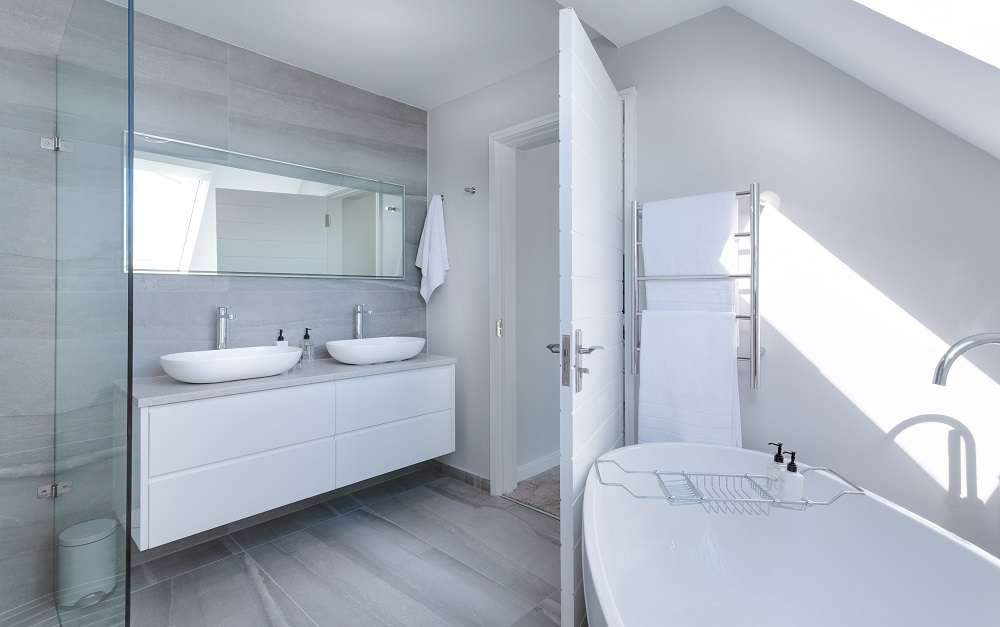Does Your Bathroom Have Mold?
Our bathrooms are one of the top 10 places mold grows in our homes. Because bathrooms are often the place in our house where moisture lingers the longest. Especially the bathroom ceiling mold is common. Steam from a hot shower on the walls, water on the floor when your kids splash too much in the bath, a broken pipe or leaky faucet that isn’t noticed; all these things lead to water settling into the walls and floor and causing bathroom mold.
What Causes Mold to Grow in a Bathroom?
We all use our bathrooms for things that create moisture in the air. A steamy bath at the end of a long day, or a hot shower in the morning. Both of those things are lovely, except for one thing; bathroom mold. Unless your bathroom has a proper ventilating system. Your bathroom will stay damp from the build-up on condensation and mold will begin to grow.
Mold Hides in Bathrooms
Sometimes it is easy to spot mold and other times it is hidden in places where you can’t see, such as behind tiles, cabinets, and mirrors and under flooring. Mold can grow behind the tiles when tiles are installed without proper water protection. The water can seep through the grout and cracks and stay trapped. Mold can grow unnoticed behind cabinets and mirrors.
If you have any leaks from your toilet or shower or had any in the past. There is a chance that there is mold growing under the flooring. Because most of these places are hidden, bathroom mold often times will grow for a long time before it is caught and taken care of.
Bathroom Ceiling Mold Is Common Due to Ventilation
This is especially true when you don’t have a good ventilation system for the bathroom. After a steamy bath or shower; condensation and humidity become a breeding ground for mold in as little as 48-hours if not properly ventilated and dried. The leading result of improper ventilation is mold growth on the ceiling of the bathroom. Because the humidity has no way to leave the room. Thereby causing the ceiling to stay wet after showers and baths.
We have seen customers remove a small area of bathroom ceiling mold when there was an air register nearby. Within a couple of months, everyone in the house was extremely sick. Due to mold spores that were spreading throughout the home in the HVAC ducts. The family had to be removed from the home. The entire house had to be professionally mitigated as a result.
How to Remove Mold on Bathroom
The good news is that there are ways to get rid of bathroom mold. Some things you can do yourself, and other things you may need help with. The best way to clean mold from a bathroom is to use a mixture of hot water and dishwashing soap. Do not use bleach to clean the moldy areas as bleach does not actually kill mold. Put the hot, soapy water on a sponge or cloth and scrub the area where the mold is. Mold on any porous materials like drywall, wood, cabinets, etc needs to the assistance of a mold professional. Surface mold many times is an indicator of a larger subsurface problem. Also, if there is a vent from the main HVAC unit located in that area. Do NOT, under any condition, remove any mold materials from the bathroom.
How to Prevent Bathroom Mold?
Prevention with mold is summed up in one phrase: remove moisture and humidity. Sometimes that is easier said than done. Ventilation is the key to removing most bathroom moisture and humidity problems! A fan in your bathroom will help with pulling humidity out of the room instead of letting the condensation stay.
While ventilation measures are key to removing moisture from the bathrooms, there is only so much that can be done. During the rainy season, it becomes a natural environment for mold to grow on walls, ceilings and just about any porous surface that lets them thrive. And therein lies the solution – you could use something like Epoxidharzboden (epoxy resin) to cover the floor and shelves. Epoxy resin is a non-porous and completely solid material that retains little to no moisture, and you still retain the ability to customize it to your personal taste! Similarly, moisture-resistant treatments could be applied to the door and window frames, walls and ceilings to discourage mold growth.
When to Call a Mold Professional?
We recommend having a professional mold evaluation if your bathroom has visible mold or a strong odor. Due to the nature of mold liking to grow in damp and dark places; the full extent of the mold damage is not initially seen. With an honest, no pressure, free estimate, it never hurts to consult the expertise of a professional. FreshStart Restoration is dedicated to quality care and award-winning customer service throughout the Kansas City Metro Area. We can consult you on the best methods to resolve any mold concerns. Also, on ways to prevent mold from forming in the future!
